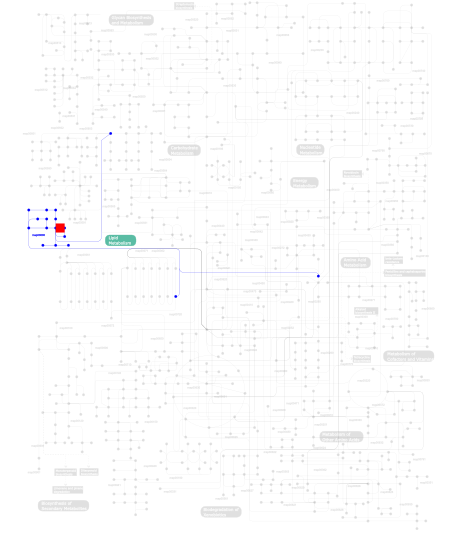The domain within your query sequence starts at position 437 and ends at position 512; the E-value for the SapB domain shown below is 3.84e-24.
GFCEVCKKLVLYLEHNLEKNSTKEEILAALEKGCSFLPDPYQKQCDDFVAEYEPLLLEIL VEVMDPGFVCSKIGVC
SapBSaposin (B) Domains |
|---|
| SMART accession number: | SM00741 |
|---|---|
| Description: | Present in multiple copies in prosaposin and in pulmonary surfactant-associated protein B. In plant aspartic proteinases, a saposin domain is circularly permuted. This causes the prediction algorithm to predict two such domains, where only one is truly present. |
| Interpro abstract (IPR008139): | The saposin B-type domain is a ~80 amino acid domain present in saposins and related proteins that interact with lipids. The domain is named after the small lysosomal proteins, saposins, which serve as sphingolipid hydrolase activator proteins in vertebrates. The mammalian saposins are synthesized as a single precursor molecule (prosaposin) which contains two saposin A-type domains in the extremities that are removed in the activation reaction, and four saposin B-type domains yielding the active saposins A, B, C and D after proteolytic cleavage. Saposin-like proteins (SAPLIPs) can have different functions, such as enzymatic activities, as cofactors of enzymes involved in lipid metabolism, as components of lung surfactant reducing the surface tension, as part of a complex involved in stage regulation of Dictyostelium, as antimicrobial effector molecules, or as a stimulator of dendritic outgrowth [ (PUBMED:8003971) (PUBMED:7595087) (PUBMED:11513801) (PUBMED:12826659) ]. The 3D structures of different SAPLIPs have been resolved, and show that the saposin B-type domain is formed by a four/five helical bundle. The saposin B-type domain is characterised by six conserved cysteine residues involved in three disulfide bridges: one between helices 2 and 3, one between the first and the last helix and one from the N-terminal part of the first helix to the C terminus. In plant aspartic proteinases the two subdomains that are connected by the disulfide bridges occur in inversed order, these are called "swaposin" domains [ (PUBMED:7610480) (PUBMED:8868085) (PUBMED:10406799) ]. In these phytepsin proteins the two half saposin B-type domains occur in combination with the aspartyl protease signature [ (PUBMED:11513801) (PUBMED:12518053) ]. |
| Family alignment: |
There are 10812 SapB domains in 5432 proteins in SMART's nrdb database.
Click on the following links for more information.
- Evolution (species in which this domain is found)
- Cellular role (predicted cellular role)
- Metabolism (metabolic pathways involving proteins which contain this domain)
- Structure (3D structures containing this domain)
- Links (links to other resources describing this domain)

































